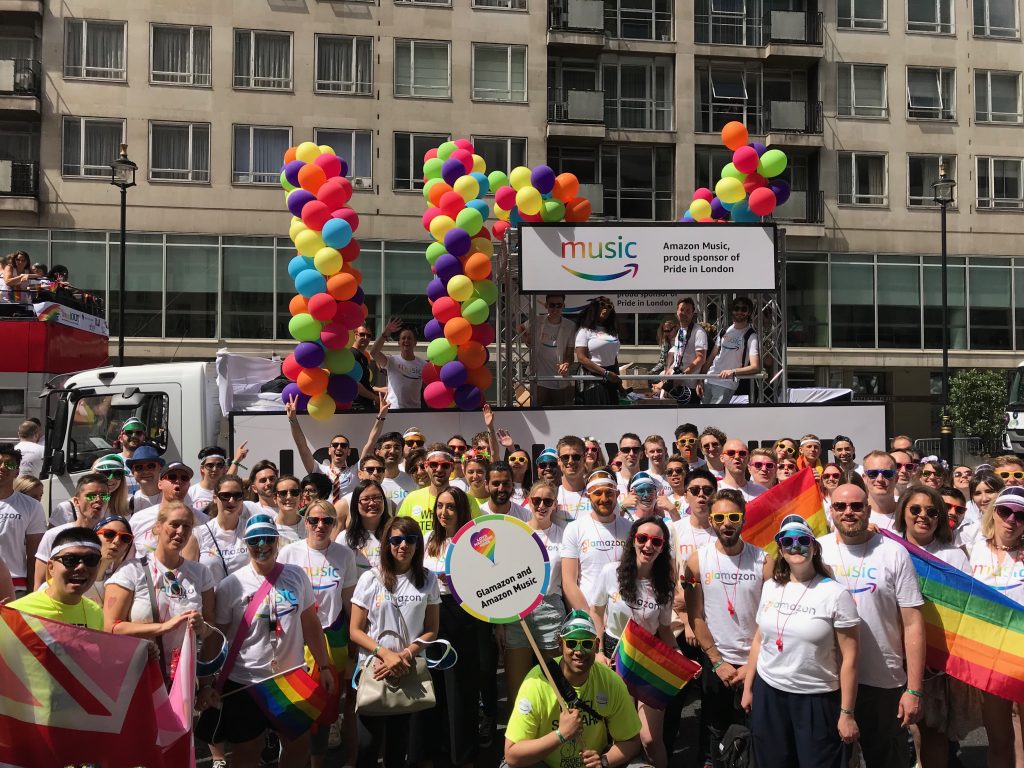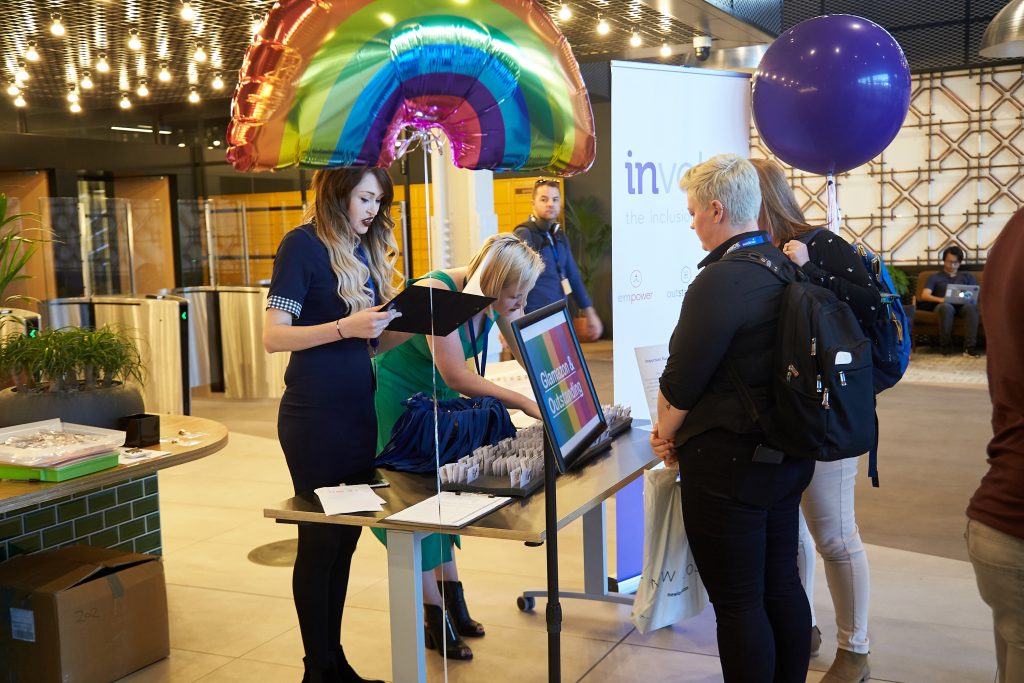LGBT+ inclusion is rightfully top-of-mind for the business community – not just because it’s the right thing to do, but because there are many cultural and corporate benefits of LGBT+ inclusion. The Harvard Business Review has reported that LGBT-inclusive workplaces help a company to attract and retain top talent, boost their appeal to growing consumer segments, and innovate for underserved markets.
However, recent research from Stonewall has revealed troubling levels of discrimination in Britain’s workplaces. The report surveyed over 3,000 LGBT+ employees in the UK and found that more than a third of LGBT+ staff (35%) have hidden their sexuality at work for fear of discrimination, while nearly a fifth (18%) have been the target of negative comments or conduct from colleagues in the last year.
There is no doubt that British businesses have made significant and positive strides in this area in recent years, however these figures remind us that there is still much to be done. It was a pleasure to sit on the judging panel for this year’s Pink News Awards to recognise the contributions of organisations and individuals that are successfully campaigning for LGBT+ rights at home and abroad. The judging process served as an important reminder that businesses must continually update their practices to stay focused on providing a safe and inclusive workplace for the LGBT+ community.
The National Trust was awarded this year’s Amazon-sponsored Third Sector Award for their efforts in highlighting LGBT+ heritage across the country and further afield. Their excellent work got me thinking about how organisations can improve inclusivity by taking a ‘continuous improvement’ approach that scrutinises their own efforts to better recognise and support LGBT+ talent.

Amazon at Pride London
What’s the state of play?
In many forward-thinking organisations, LGBT+ employees are already proud to celebrate their identity. But in recent memory the situation was very different: male homosexuality was only (partially) decriminalised in England and Wales in 1967, and LGBT+ people were not always entitled to the same legal protections given to other groups until the Equality Act of 2010. So it is unsurprising that many were too scared to come out, and some of those entrenched attitudes are still visible within the workplace.
One story from an Amazon colleague, Belinda Hughes, has always stuck in my mind. She told me about life in Australia in the 90s when she was closeted at work, her manager was closeted, and they were working together to sponsor gay artists – who were also closeted. Faced with homophobia, they would decide not to say anything. Belinda talked of her nerves and anxiety about being discovered – especially when spotted holding hands with another woman outside of work. Later in life, when coming out to colleagues and receiving a positive reaction, she realised that she had been a victim of her own fear of how others would perceive her. This is just one story of many that I have come across during my career.
Organisations that go beyond anti-discrimination policies can play a key role in updating those regressive attitudes. Clear and robust policies should be the starting point – but they are also the minimum standard. Much more importantly, organisations have actively supported diversity in this area, helping employees to be not only visible but to raise awareness, reduce ignorance and build allies outside the LGBT+ community.
Ultimately, there is no one-size-fits-all approach, and each organisation needs to come up with a detailed plan about why diversity is important for their business and how it can be achieved. A clear strategy to create an inclusive culture must be backed by inclusive policies as well as senior leadership.

Amazon - glamazon event
What more can we do?
Alongside good policies, improved ways of working on a day-to-day basis can drive objective decision-making and deliver better outcomes. Even simple initiatives can help to reduce unconscious bias – for example, ensuring the author is not named on meeting documents and having discussions and decisions founded on data rather than who has the loudest voice.
Employee assessments should also be measured as much as possible against a consistent and objective standard, ensuring that the playing field is even for all. For Amazon, our Leadership Principles set a universal standard that we all work towards every day and are the foundation of all employee assessments. When we talk about employees insisting on high standards, being curious and earning trust, these qualities all help to create a more inclusive workplace. One simple yet powerful change we’ve made at Amazon is the use of an ‘unconscious bias primer’ at the start of our talent and promotion review sessions. Leaders take the time to read a short paper highlighting some of the biases that can unwittingly influence people decisions, as well as mechanisms to guard against those. We’ve found that this simple act creates an easy platform to challenge each other where we see signs of bias and to ensure we’re making fair, objective decisions for our people.
Employee affinity groups can also be powerful forces for positive change. Amazon’s employee affinity group for LGBT+ staff, glamazon, has successfully fostered a more inclusive workplace by identifying key values and taking organisational goals forwards. Earlier this year, for example, glamazon supported the development of our new UK-wide transgender guidelines for all employees on how to support transgender colleagues. The group also helps to foster future leaders, boost employee engagement and give an independent voice to the community.

Amazon host Lesbians Who Tech
What does ‘continuous improvement’ look like?
Much like the creative process, I consider the process of improving inclusion and diversity as a continuous and ongoing journey – something we always consider as an organisational goal.
Promoting the benefits of diversity can be a great starting point. For example, innovation and diversity have a close relationship to the extent that diversity can be good for a company’s bottom line - McKinsey reported that businesses with a diverse workforce can be up to 35% more likely to outperform competitors. With this in mind, promoting diversity naturally includes promoting the fact that it’s good for business as well as being the right thing to do.
Empowered and well-informed managers are also vital, so regular training on cultural sensitivity is a must. At Amazon, we are encouraging managers to sign up to our Team Inclusion Program, a manager-led program that enables teams to identify ways to increase their inclusion, and ultimately drive a better team experience and effectiveness. Senior leaders should be equally visible, loud and confident in their support for all employee groups.
Simple initiatives can also help allies to be visible in their support. As a powerful symbol of pride among the LGBT+ community, the rainbow flag has long been synonymous with inclusion, diversity and progress. Some companies have adopted easy ways for allies to make themselves visible by using the rainbow to great effect. Inspired by the excellent Rainbow Laces campaign from Stonewall, organisations could make rainbow lanyards and stationery available to anybody who signs up as an ally. Those visible, empowered and educated allies will be more prepared to influence others.
Another simple but effective change we made at Amazon recently is the option to add preferred pronouns on our intranet directory. If they choose to do so, any employee can display their preferred pronouns and I’ve been encouraged by the number of senior leaders in the UK demonstrating support by doing so themselves.
It's also important to engage with the community in order to identify any blind spots in our views and attitudes. Sometimes well-meaning interactions can come across as negative, prejudiced or downright rude. In truth, no amount of training or awareness can replicate the lived experience of somebody who considers themselves a member of the LGBT+ community. Those experiences vary hugely, and they all need to be taken into account when managing employees to get the best out of them. Taking the time to listen, learn and educate others is always worthwhile.

Amazon host OUTstanding summer reception
Coming out at work
It’s vital to note that ‘coming out’ is different for each individual. For example, over the summer we worked closely with Sophie Roberts, one of our Edinburgh-based software managers, to advise on Amazon’s new transgender guidelines. Sophie used these guidelines to come out to her colleagues about her transition which up until that point was a close secret between herself and HR when she decided in 2016, after the death of her mother, that life was too short to not live her authentic life. Since coming out to her colleagues, Sophie has completed her transition and had overwhelming support from HR and the Amazon Women in Engineering affinity group. Working alongside Sophie was a pleasure: her bravery, insight and resilience were integral to developing a set of guidelines that can support the entire organisation.
And to further illustrate the positive impact of a fully inclusive workplace, I spoke to Luca Sale, chair of glamazon, about his experience of coming out at work. Back in 2015, Luca founded glamazon UK and took it upon himself to create a safe space for everyone working at the organisation: “Coming out to my colleagues was a cathartic experience”, he explained. “It helped me to build new friendships, create more trust within my team and take back that mental energy that was being wasted on telling my creative version of the truth. Coming out today happens organically for me.”
What these stories show is that people always perform better when they can be themselves, so it’s in every company’s best interest to provide the best possible working environment for their LGBT+ employees. We’ll continue to strive to play our part, and I hope other businesses will do the same. After all, it’s not just good for business, it’s fundamentally the right thing to do.
Ben Farmer, UK Senior HR Manager
Amazon










